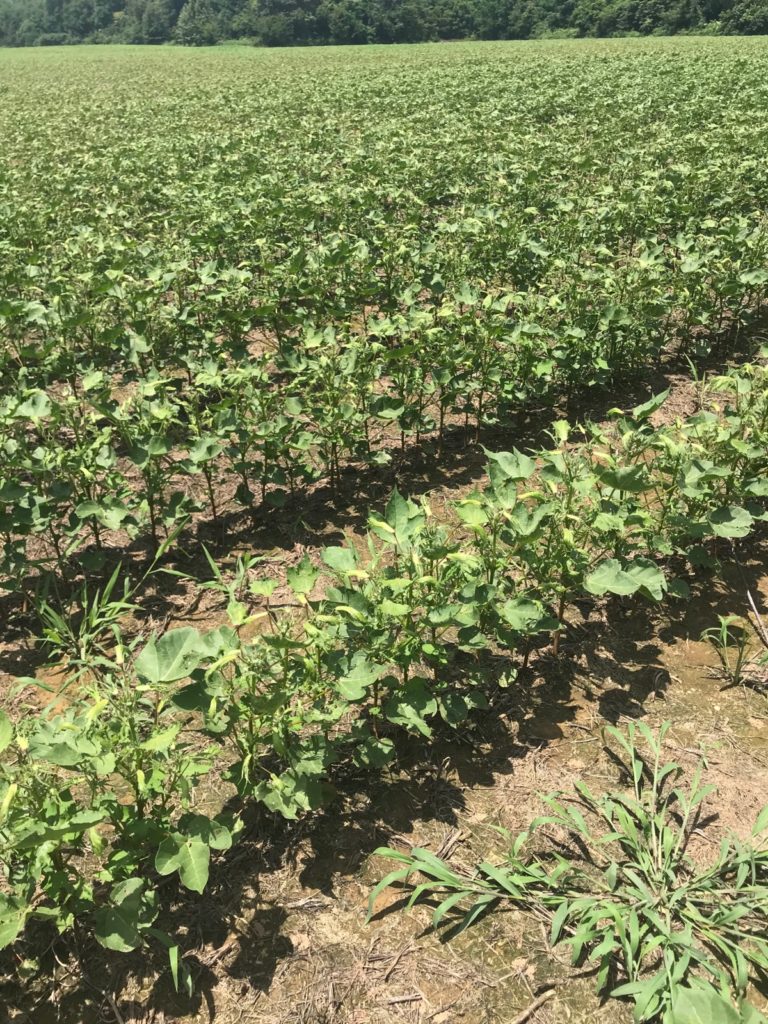 Information regarding cotton management following an off-target auxin event has been requested by several producers in our area. This blog briefly covers factors which can impact the yield penalties associated with auxin injury and best management practices after the injury occurs.
Information regarding cotton management following an off-target auxin event has been requested by several producers in our area. This blog briefly covers factors which can impact the yield penalties associated with auxin injury and best management practices after the injury occurs.
A blog post from a couple growing seasons ago discussed the decision to keep the injured stand and subsequent management suggestions. It is important to still note that depending on your specific situation, it may be necessary to document the injury or keep a portion of the stand in order to document yield loss. That information should be available from your insurance agent or attorney.
As tough of a planting season as 2020 was, most cotton in the area is later than what we typically see. The 4th of July passed us by, and only a few acres in the area have their first bloom. Following an auxin-injury event, a decision must be made to keep the injured stand or replant to soybeans. There are many different things that play into making these decisions including comparing potential returns from the current crop against the returns of a whole new crop.
Relating visual injury from auxin herbicides to yield penalties can be tricky, although researchers (ourselves, included) are working towards a more accurate route for predicting yield losses. The different factors that influence yield penalties related to uninjured stands are 1) timing of herbicide injury, 2) herbicide rate, and 3) remaining heat units in the season. The study that we are conducting is investigating various rates of both 2,4-D and dicamba on sensitive cotton cultivars at vegetative (matchhead square) and reproductive (two weeks after first bloom) growth stages.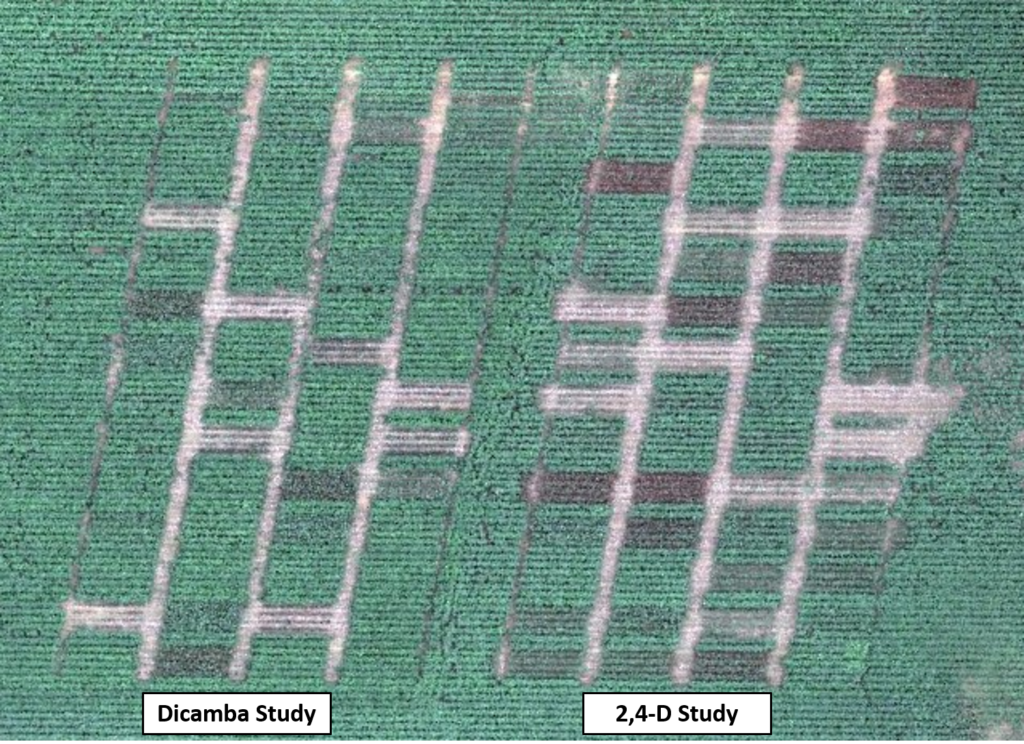
Preliminary data from last years’ research in Tennessee suggests that visual injury symptoms are more severe when injury occurs during vegetative growth compared to those same application rates applied during reproductive growth. This makes sense because the auxin herbicide will move to where growth is occurring: during vegetative growth, the leaves are going to exhibit those unique auxin injury symptoms whereas later in the growing season when the plant shifts to reproductive growth, the injury symptoms won’t be as visible or severe in the leaves but more so around the fruiting structures.
While injury is oftentimes more severe following auxin injury during vegetative growth, our data suggest that the yield penalty will not always be more severe following an auxin hit during this time. That’s where the factor of remaining heat units in the season comes into play. Preliminary data suggests that regardless of herbicide rate, cotton injured during reproductive growth has a greater yield penalty than cotton injured earlier in the growing season. The cotton crop, when exposed to low and ultra-low rates of an auxin herbicide during vegetative growth, can adjust and compensate for the injury it endures. New growth from the terminal will eventually be non-symptomatic and normal growth should resume. When those auxin hits occur later in the season, after bloom, the crop does not have enough time to recover.
Visual injury observed following applications of dicamba and 2,4-D follow similar trends although injury is greater overall when sensitive cotton is exposed to 2,4-D. When it comes to yield penalties, cotton exposed to dicamba did not result in a significant yield loss until a 1/16th X rate was applied, yet cotton exposed to 2,4-D began to see a yield penalty when a 1/256th X rate was applied.
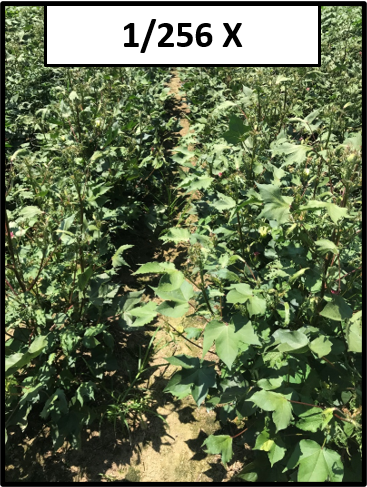
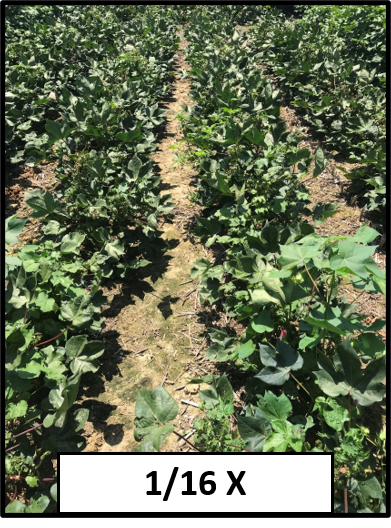
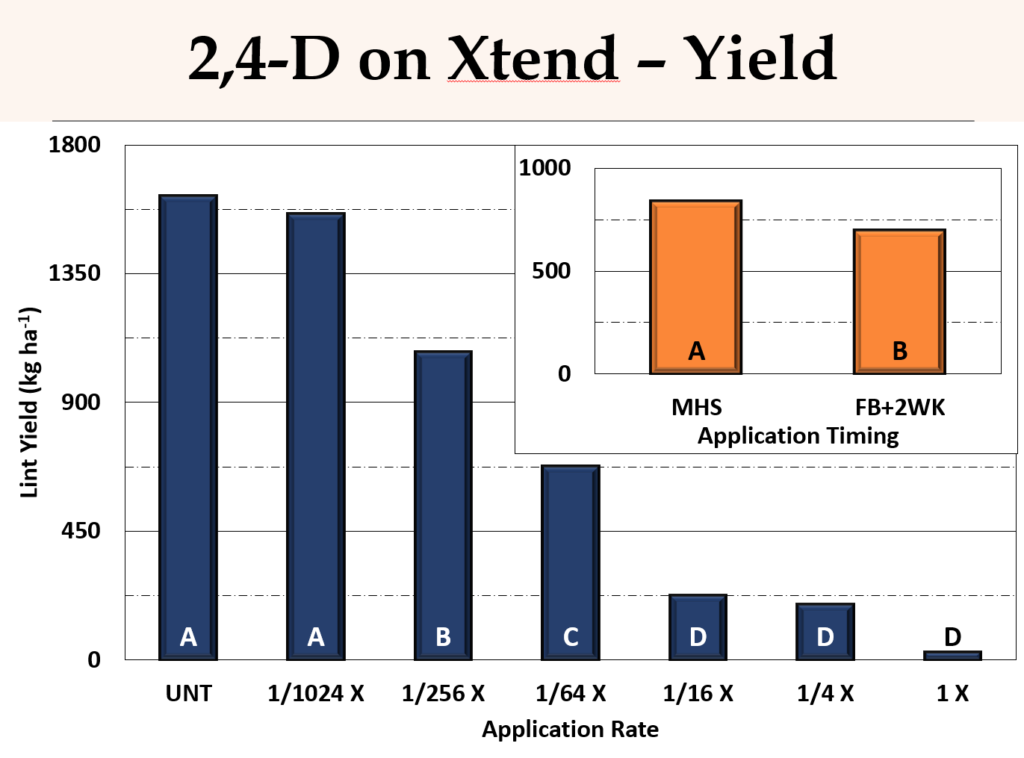
In terms of managing an injured cotton crop, decisions should be made to protect the yield potential that remains by eliminating any additional stressors the crop may encounter. Foliar nutrient blends and auxin recovery products are not recommended for auxin-injured acres. When it comes to foliar fertilizers, healthy cotton is more efficient in its utilization of these products compared to injured or stressed cotton. So, at the end of the day, be conservative with your management. Protect yourself against drought stress if possible, protect fruiting structures, and manage for rank growth by keeping an eye on internode length and applying plant growth regulators when necessary.
Fee free to reach out to your local agent if you have any additional questions.

